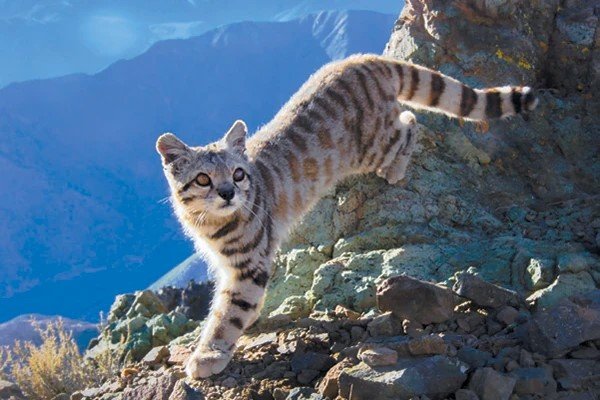
Bolivia
Common Name: Andean Cat / Andean Mountain Cat
Scientific Name: Leopardus jacobita
Image: © Cristian Sepúlveda, AGA

Fact
Their long tail (which is 70% of its body length) is important to help with their balance and agility, often held up high while they hunt in mountainous rocky terrain.
About
Overview:
The Andean mountain cat is regarded as one of the world’s most endangered wild cats and perhaps South America’s rarest felid, yet, as far as cat species go, it is amongst the least known. They live in Bolivia and southern Peru to north-western Argentina and northern Chile in the Andean mountain region, as well as the northern portion of the Patagonian steppe in Argentina.
Lifespan:
16 years
Habitat:
Their habitat is very specialized, as they live only in the rocky-arid and semi-arid areas, high up in the high Andes Mountains, above the timberline (between 3,000 to 4,000 meters). This habitat is very rocky with scattered tola bushes, bunchgrass, and other small shrubs.
When to spot:
The Andean cat is so scare and elusive that there have been very few observations in the wild. They are a difficult species to find as they live in an area with extreme conditions such as low temperatures, strong winds and thin air at high altitudes.
Diet:
Andean mountain cats have a specialized diet of mountain chinchillas and mountain viscachas. However, they also eat reptiles, birds, and small mammals, such as tuco tucos and rabbits. They are thought to be mainly nocturnal.

Fact
From the few observations that have been recorded, Andean mountain cats seem to be solitary animals and unafraid of humans.
How To Identify
The Andean cat is similar in size to domestic cats (57-85 cm in length). However, their thick fur and long tail make them look bigger. Their fur is ash-gray or pale silver and has isolated orange-brown or hazel stripes and spots. They have a black nose and pale chest and belly. The cat’s limbs and tail have black rings around them. Females and males look alike. The body of a young Andean mountain cat is lighter in its color and is covered with many small-sized dots.
Image: © Juan Reppucci / courtesy of Andean Cat Alliance
Vulnerability Status
IUCN Red List status: Endangered
Country status: Endangered
Population size: Scientists estimate their total population is less than 1,400 animals and declining.
Threats
Key threats to species:
So little is known of this cat that it is hard to determine whether its rarity is a natural phenomenon or is attributed to human actions. These cats may be endangered as a result of habitat deterioration and hunting by humans for pelts.
The decrease in numbers of their main prey, mountain viscachas and mountain chinchillas, may also be a reason for their low numbers.
The rocky patches that they live in are not continuous and have dry conditions, therefore the Andean cat and its prey live in a highly fragile ecosystem. This means even minor environmental modifications can have great impacts on native species.
It shares its habitat with the pampas cat (Leopardus colocolo), another feline of similar size but of wider distribution and with which it is occasionally confused. There is a great overlap of available resources and territory between these two cat species.
Importance of the species:
Andean mountain cats are significant predators, playing an important ecological role by controlling the populations of its prey.

Fact
It is considered the most threatened feline in the Americas and is counted among the five most endangered cats in the world.
Conservation Actions
The Andean cat is included in Appendix I of CITES and it is fully protected across its range. Hunting and trade are prohibited in Argentina, Bolivia, Chile and Peru. However, law enforcement is difficult in most of its distribution range and in some parts non-existent.
Despite great concern regarding the status of the Andean cat, very little is known about its population structure, which is crucial data for appropriate management plans.
The Andean Cat Alliance (Alianza Gato Andino) is a multinational and interdisciplinary network, created in 1999 by conservation professionals from Argentina, Bolivia, Chile and Peru, to develop coordinated actions for the conservation of the species and its habitat throughout its range. To implement conservation initiatives, they work based on three action lines: research, conservation, and education.
Some of the conservation solutions:
Reducing conflict: The Andean Cat Alliance’s Conflict Mitigation Program aims to eliminate retaliatory hunting of Andean cats by reducing conflict between herders and carnivores that prey on cattle. By providing livestock guard dogs, deterrent lights, and livestock corrals, they reduce these incidents and improve the community’s awareness about the relevance of the conservation of the Andean cat.
Scientific research: The “In the Field 24/7” program uses non-invasive research methods, such as camera trapping and scat sampling, to increase knowledge of biology, ecology and conservation threats.
Expanding education: The education program increases the knowledge and raises awareness about the relevance of the Andean cat and its environment among local communities.
Due to these efforts and the support of the Wildlife Conservation Network, the understanding of the natural history and conservation status of the Andean cat has considerably increased.
Further Information
Click the title below for further information.
-
The Andean Cat Alliance (Alianza Gato Andino, or AGA) is a multinational and interdisciplinary network, created in 1999 by conservation professionals from Argentina, Bolivia, Chile and Peru, to develop coordinated actions for the conservation of the species and its habitat throughout its range.
-
WCN protects endangered wildlife by supporting conservationists who ensure wildlife and people coexist and thrive.
Common Name: Three-coloured harlequin toad
Scientific Name: Atelopus tricolor
Image: © Mauricio Pacheco

Fact
Harlequin toads are the most threatened group of amphibians.
About
Image: © Amphibian Survival Alliance
Overview:
The three-colour harlequin toad is found in Eastern Andes of Peru and Bolivia, where it was once a common species. In January 2020, after several attempts to find the species and almost 17 years without records, four individuals were found by two nature photographers in a province of La Paz, Bolivia, and this remains the only site in Bolivia where the species can be found.
Lifespan:
10 years.
Habitat:
The three-colour harlequin toad inhabits tropical or subtropical moist montane forests and rivers. They can be found at an elevation of between 600-2500m.
When to spot:
They are very difficult to spot given their rarity and because they are often spread out in dense forest. During breeding season they are more conspicuous because they move towards streams in search of mates.
Diet:
They eat small arthropods, including spiders and insects, like caterpillars, flies, and ants.

Fact
No sightings of the species had been recorded since 2003, until 4 individuals were found by photographers in 2020.
How To Identify
The toads have a slim body and a long head. Their bodies are usually coloured in varying patterns of dark brown and yellow and they have reddish feet.
Vulnerability Status
IUCN Red List status: Critically endangered
Country status: Critically endangered
Population size: Unknown, estimated declines between 80–90% over three generations.
Threats
Key threats to species:
Rapid declines in populations of three-coloured harlequin toads are a result of the introduction of invasive species and climate change. They are also threatened by habitat destruction, notably by the clearing of land for annual and perennial non-timber crops and residential development, and by pollution due to the run-off of agricultural and forestry effluents. The species is also threatened by a deadly infectious disease called chytridiomycosis. It affects the skin and prevents frogs from being able to “drink” water and breathe through their skin and absorb salts which leads to heart attacks in the animals.
Importance of the Species:
In some areas, harlequin toads have great cultural value and they play vital roles in the ecosystems in which they live for example, they are indicators of water quality.

Fact
As part of the Bufonidae family, they are known as the "true" toads.
Conservation Actions
Several organisations, including the Amphibian Survival Alliance, Amphibian Ark, Panama Amphibian Rescue and Conservation Project, and others, are leading efforts to develop and foster a coordinated harlequin toad conservation network committed to preventing their extinction. The network is made up of national and international conservation groups and zoos, academic institutions and governments working together to implement substantial, long-term, range-wide conservation measures for this unique group of amphibians. Donate here.
Further Information
Click the title below for further information.
-
ReWild launched in 2021 combining more than three decades of conservation impact by Leonardo DiCaprio and Global Wildlife Conservation, leveraging expertise, partnerships and platforms to bring new attention, energy and voices together. Collectively with their partners in more than 50 countries, in 2020 alone they worked to conserve over 45 million acres of wild places and to reverse the plight of 835 threatened species.
-
Established in 1964, The International Union for Conservation of Nature’s Red List of Threatened Species has evolved to become the world’s most comprehensive information source on the global conservation status of animal, fungi and plant species.
The IUCN Red List is a critical indicator of the health of the world’s biodiversity. Far more than a list of species and their status, it is a powerful tool to inform and catalyse action for biodiversity conservation and policy change, critical to protecting the natural resources we need to survive. It provides information about range, population size, habitat and ecology, use and/or trade, threats, and conservation actions that will help inform necessary conservation decisions.








